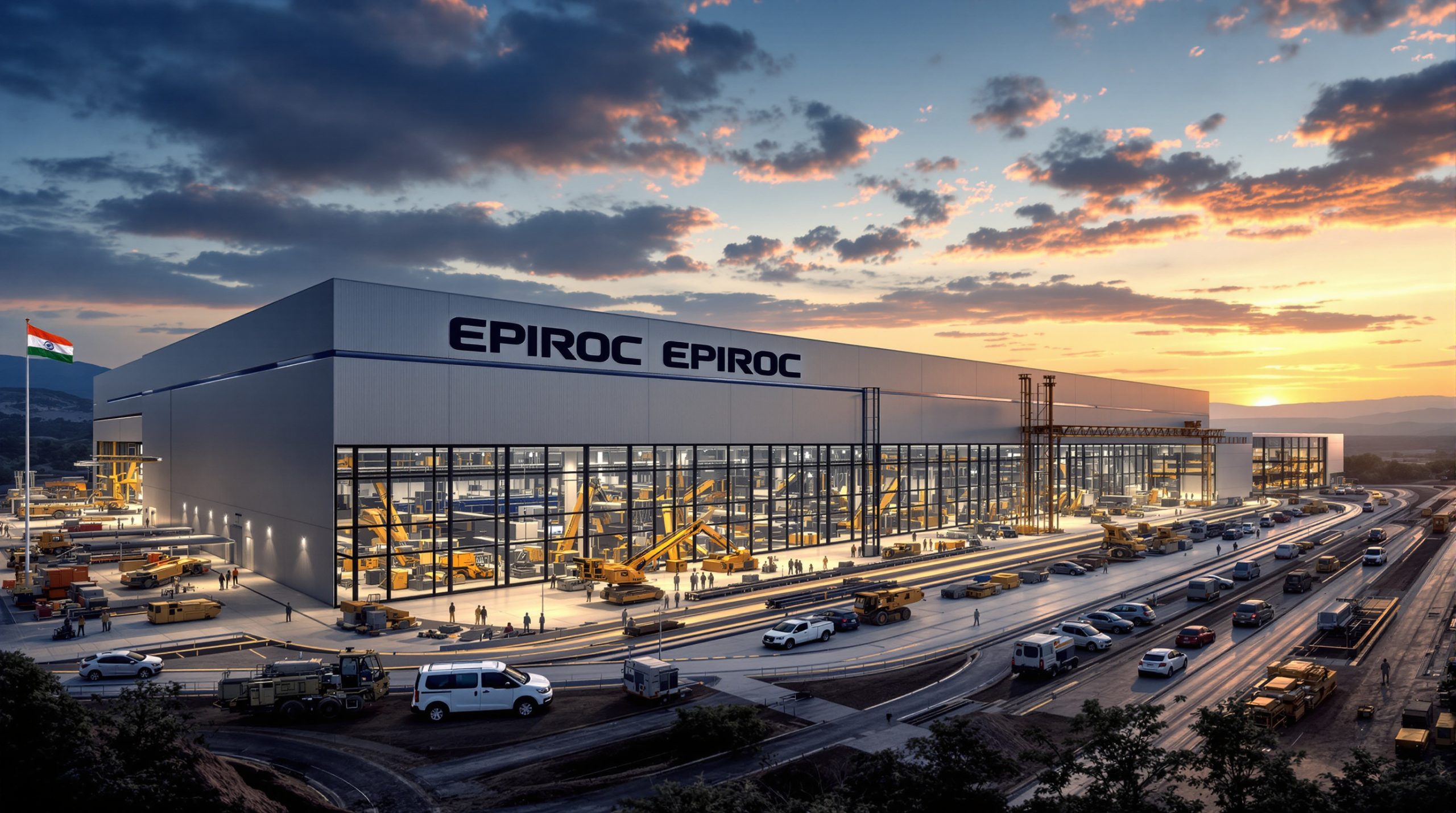What is the HiQ-CARB Research Project and Why Does it Matter?
The HiQ-CARB research project represents a groundbreaking four-year initiative launched in 2021 focused on revolutionizing the conductive additives used in lithium battery electrodes. This interdisciplinary consortium has successfully developed innovative carbon-based additives that significantly reduce the carbon footprint of battery production while simultaneously enhancing overall battery performance.
At its core, HiQ-CARB addresses a critical sustainability challenge in battery manufacturing. Traditional conductive additives used in lithium-ion batteries are primarily derived from fossil sources, contributing substantially to the carbon footprint of battery production. The project's primary goal has been to minimize the quantity of these additives required in battery electrodes by engineering a novel combination of resource-efficient materials.
The Groundbreaking Four-Year Initiative
The consortium brings together experts from across Europe, including researchers from Fraunhofer ISC, Aalto University, the University of Bordeaux, and industry partner CustomCells. This collaborative approach has enabled a comprehensive development process that spans from laboratory research to practical manufacturing implementation.
"As a battery manufacturer based in Germany, CustomCells supports the idea of an innovative battery landscape in Europe with important components from the region. We are delighted about the new opportunities that HiQ-CARB has created," notes Jan Majchel from CustomCells, highlighting the project's significance for European battery innovation.
The project's focus on sustainability aligns perfectly with broader European initiatives to develop more environmentally responsible energy storage solutions. By addressing the environmental impact of conductive additives, the HiQ-CARB project contributes to the overall goal of creating more sustainable battery technologies.
The Environmental Challenge of Traditional Battery Additives
Conventional conductive carbon blacks used in battery manufacturing face several significant limitations:
- They originate primarily from fossil sources, carrying a substantial carbon footprint
- Traditional additives require relatively high quantities to achieve necessary conductivity
- They add weight to battery systems without contributing to energy storage capacity
- Their production processes are often energy-intensive and environmentally problematic
The HiQ-CARB project directly addresses these challenges by developing alternatives that are both more environmentally responsible and offer superior performance characteristics. This dual focus on sustainability and performance enhancement makes the project particularly valuable for advancing battery metals investment.
How Do Carbon Additives Function in Lithium Battery Systems?
Understanding the role of conductive additives is essential for appreciating the significance of the HiQ-CARB innovation. These materials play a fundamental but often overlooked role in battery functionality and performance.
The Critical Role of Conductivity Enhancers
Conductive additives serve as electron pathways throughout battery electrodes. In a typical lithium-ion battery electrode, the active materials (which store the energy) are mixed with conductive additives and binders to form a composite structure. The active materials themselves often have limited electrical conductivity, which is where the additives become crucial.
These additives create a conductive network throughout the electrode, ensuring efficient electron movement during battery charging and discharging. Without adequate conductivity, batteries would experience:
- Slower charging rates
- Reduced power delivery capabilities
- Increased internal resistance
- Diminished overall efficiency
- Potential "dead zones" in the electrode where active material becomes inaccessible
By enhancing the electrode's overall conductivity, these additives enable faster electron movement, which directly translates to improved charging and discharging capabilities in lithium-ion batteries.
Current Limitations in Additive Technology
While traditional carbon black additives effectively improve conductivity, they bring several disadvantages:
- Weight penalties: Conventional additives can constitute up to 10% of electrode weight without contributing to energy storage
- Environmental impact: Fossil-derived carbon blacks carry a significant carbon footprint
- Production inefficiencies: Manufacturing processes for traditional carbon blacks are often energy-intensive
- Performance constraints: Even with substantial additive content, conductivity may be suboptimal for high-performance applications
These limitations have made conductive additives a prime target for innovation in battery manufacturing, especially as the industry pushes for more sustainable and higher-performing energy storage solutions.
What Innovations Has the HiQ-CARB Project Developed?
The HiQ-CARB research project and improved carbon additives for lithium batteries represent a core innovation that combines advanced materials science with sustainability principles to create a superior alternative to conventional carbon blacks.
The Novel Material Combination Approach
The breakthrough developed by the HiQ-CARB team combines two distinct carbon materials to create a synergistic effect:
- Carbon nanotubes (CNTs): These highly conductive nanomaterials create efficient electron pathways throughout the electrode
- Carbon acetylene black: Derived from renewable raw materials rather than fossil sources
This specialized combination creates a synergistic effect that dramatically improves electrode conductivity. The carbon nanotubes form an interconnected network that functions as a high-speed highway for electrons, while the carbon acetylene black fills gaps and creates additional conductive pathways.
The use of renewable raw materials for the carbon acetylene black component represents a significant step toward more sustainable battery production. By moving away from fossil-derived carbon blacks, the HiQ-CARB approach reduces the environmental impact of battery manufacturing while simultaneously improving performance.
Quantifiable Performance Improvements
The exceptional conductivity of the HiQ-CARB material system enables manufacturers to use significantly smaller quantities of additives while maintaining or even improving battery performance parameters. This delivers multiple measurable benefits:
- Reduced material requirements: Less additive material needed for equivalent or superior conductivity
- Lighter battery designs: Contributing to overall energy density improvements
- Manufacturing efficiencies: Reduced material inputs can streamline production processes
- Enhanced charging capabilities: Superior conductivity enables faster energy transfer
- Reduced environmental footprint: Renewable-sourced materials with lower carbon impact
These improvements address both the performance limitations and sustainability challenges of traditional conductive additives, making the HiQ-CARB innovation particularly valuable for advancing battery technology.
How Was the Research Conducted and Validated?
The HiQ-CARB project employed rigorous scientific methodologies to develop, refine, and validate its innovative conductive additives, ensuring both performance excellence and practical applicability.
The Collaborative Research Methodology
The interdisciplinary nature of the HiQ-CARB consortium enabled a comprehensive approach to research and development:
- Material composition development: Researchers worked to optimize the ratio and integration of carbon nanotubes and renewable carbon acetylene black
- Production process scaling: The team developed methods to scale production from laboratory to pilot quantities
- Performance assessment: Rigorous testing validated the conductivity and performance characteristics of the new additives
- Life cycle analysis: The University of Bordeaux conducted comprehensive environmental impact assessments
- Manufacturing integration: CustomCells implemented the additives in actual production environments
This multifaceted approach ensured that the research addressed not only theoretical performance improvements but also practical implementation considerations and environmental impact assessment.
Real-World Manufacturing Integration
A critical aspect of the HiQ-CARB project was validating the new additives in actual manufacturing environments. This practical testing confirmed that the innovative materials could be seamlessly integrated into existing production processes without requiring significant modifications.
"The carbon-based HiQ-CARB additives could be easily integrated into our existing production processes without any significant changes. We achieved very homogeneous coating patterns, which convinced us of their quality," explains Jan Majchel from CustomCells.
This manufacturing validation is particularly important for the commercial viability of the new additives. Technologies that require substantial production process changes often face significant barriers to adoption, regardless of their performance benefits. By demonstrating compatibility with existing manufacturing methods, the HiQ-CARB additives offer a practical path to implementation.
Who Are the Key Players in the HiQ-CARB Consortium?
The success of the HiQ-CARB project stems in large part from the diverse expertise of its consortium members, who brought complementary capabilities to the research initiative.
The Expert Research Team
The HiQ-CARB consortium brought together experts from various fields and institutions:
- Fraunhofer ISC: Contributed material science expertise and evaluation capabilities, helping develop and refine the novel additive compositions
- Aalto University: Provided specialized knowledge in nanomaterials, particularly in the optimization of carbon nanotube properties and integration
- University of Bordeaux: Conducted comprehensive life cycle analysis (LCA) to validate the environmental benefits of the new additives
- CustomCells: Facilitated practical implementation in production environments, validating the manufacturing feasibility of the innovation
This combination of academic, research institution, and industry partners created a powerful collaborative framework that spanned the entire development process from basic research to practical implementation.
Strategic Alignment with European Battery Initiatives
The HiQ-CARB project aligns strategically with broader European initiatives to develop a more robust and sustainable battery industry. As battery manufacturing becomes increasingly critical for clean energy and transportation applications, Europe has prioritized developing local expertise and production capabilities.
"As a battery manufacturer based in Germany, CustomCells supports the idea of an innovative battery landscape in Europe with important components from the region," notes Jan Majchel, highlighting the project's contribution to European battery innovation.
By developing more sustainable battery components with enhanced performance characteristics, the HiQ-CARB project contributes to Europe's competitiveness in the rapidly growing battery industry while simultaneously advancing sustainability objectives.
What Are the Practical Applications and Benefits?
The innovative conductive additives developed by the HiQ-CARB project offer significant benefits across multiple battery applications, from electric vehicles in mining to grid storage systems and consumer electronics.
Electric Vehicle Battery Enhancements
The enhanced performance characteristics of batteries using HiQ-CARB additives make them particularly valuable for electric vehicle applications:
- Faster charging capabilities: The superior conductivity can enable reduced charging times, addressing a key consumer concern for EVs
- Improved range through weight reduction: Lighter battery designs contribute to overall vehicle efficiency
- Lower manufacturing carbon footprint: Supporting the environmental benefits of electric vehicles with more sustainable battery components
- Potential cost optimizations: Reduced material requirements can contribute to manufacturing cost efficiencies
These benefits address several critical challenges in electric vehicle adoption, particularly around charging speed, range, and environmental impact. As the automotive industry increasingly transitions to electric propulsion, innovations like the HiQ-CARB additives play an important role in overcoming technical and sustainability hurdles.
Grid Storage and Renewable Energy Integration
Large-scale energy storage systems for grid applications can also benefit significantly from the HiQ-CARB technology:
- Enhanced cycling performance: Better conductivity can contribute to improved charge/discharge efficiency over thousands of cycles
- Improved cost-effectiveness: Reduced material requirements may help address cost challenges in large-scale storage
- Reduced environmental impact: More sustainable components align with the environmental goals of renewable energy systems
- Better integration with renewable energy sources: Improved performance characteristics can help storage systems better manage the variability of renewable generation
As renewable energy deployment accelerates, the need for efficient, sustainable, and cost-effective energy storage becomes increasingly critical. Furthermore, innovations in battery recycling breakthrough technologies can complement these advancements by creating more sustainable battery lifecycles.
Consumer Electronics Applications
The technology also offers advantages for portable electronic devices:
- Lighter battery designs: Contributing to more portable devices
- Improved charging speeds: Addressing a key consumer pain point
- Enhanced sustainability credentials: Supporting manufacturers' environmental goals
- Potential for longer device lifespans: Better battery performance can extend overall device utility
These benefits align with consumer demands for more convenient, sustainable, and high-performing electronic devices, making the HiQ-CARB innovation relevant across multiple market segments.
What's the Future Outlook for HiQ-CARB Technology?
The successful development of the HiQ-CARB additives represents a significant achievement, but also opens new possibilities for further innovation and commercialization.
Commercialization Pathway and Timeline
With the successful demonstration of manufacturing integration at CustomCells, the path to commercialization includes several key steps:
- Production optimization: Refining manufacturing processes for cost-effective large-scale production
- Further integration testing: Validating performance across a wider range of battery configurations and applications
- Supply chain development: Establishing reliable sources for specialized materials, particularly renewable carbon acetylene black
- Regulatory and safety certification: Ensuring compliance with relevant standards and regulations
The project's demonstration of manufacturing compatibility represents a critical milestone in the commercialization journey, addressing one of the most significant barriers to adoption for new battery materials.
Next-Generation Research Directions
The success of the HiQ-CARB project opens several promising avenues for continued research:
- Further optimization of material ratios: Refining the proportions of CNTs and carbon acetylene black for specific applications
- Exploration of additional renewable carbon sources: Investigating other sustainable precursors for carbon additives
- Integration with next-generation battery chemistries: Adapting the additives for solid-state, sodium-ion, and other emerging battery technologies
- Scale-up to industrial production volumes: Developing processes for cost-effective large-scale manufacturing
These research directions could further enhance the benefits of the HiQ-CARB approach, potentially expanding its applications and improving its sustainability credentials. Additionally, integration with emerging battery-grade lithium refinery facilities could create more comprehensive sustainable battery supply chains.
FAQ: Understanding HiQ-CARB Technology
What makes HiQ-CARB additives different from conventional carbon additives?
HiQ-CARB additives combine resource-efficient carbon nanotubes with renewable-sourced carbon acetylene black, creating a highly conductive material system that requires smaller quantities while delivering superior performance and reduced environmental impact. Unlike conventional carbon blacks, which are derived primarily from fossil sources, the HiQ-CARB approach prioritizes sustainable raw materials and enhanced functionality.
How much can these additives reduce the carbon footprint of battery production?
The combination of renewable sourcing for the carbon acetylene black component and the reduced quantity of additives required delivers significant carbon footprint reductions compared to conventional fossil-based carbon additives. According to research from Fraunhofer ISC, these improvements align with broader sustainability goals for battery manufacturing.
Can existing battery manufacturers adopt this technology without major equipment changes?
Yes, as demonstrated by CustomCells during the project, the HiQ-CARB additives can be integrated into existing production processes without significant modifications. According to Jan Majchel from CustomCells: "The carbon-based HiQ-CARB additives could be easily integrated into our existing production processes without any significant changes. We achieved very homogeneous coating patterns, which convinced us of their quality."
How do these additives affect battery charging speeds?
The enhanced conductivity provided by HiQ-CARB additives significantly improves electron movement within electrodes, enabling faster charging rates. By creating more efficient pathways for electron transfer, the additives reduce internal resistance during charging, which directly translates to reduced charging times. The specific improvement depends on the overall battery design and other components.
Are there any trade-offs or disadvantages to using these new carbon additives?
While the HiQ-CARB additives offer numerous advantages, considerations include the current production scale of specialized carbon nanotubes and the need for precise process control to achieve optimal material distribution within electrodes. As with any new material technology, manufacturers must also consider supply chain reliability and long-term performance validation across different operating conditions and battery configurations.
Conclusion: The Significance of HiQ-CARB for the Future of Battery Technology
The HiQ-CARB research project and improved carbon additives for lithium batteries represents a significant advancement in battery component technology, addressing both performance and sustainability challenges associated with conductive additives. By developing innovative carbon-based materials that enhance conductivity while reducing environmental impact, the project contributes to the broader goal of creating more sustainable and higher-performing energy storage solutions.
The project's successful demonstration of manufacturing integration at CustomCells highlights the practical viability of the innovation, addressing a critical hurdle for new battery materials. As battery technology continues to evolve, innovations like the HiQ-CARB additives will play an important role in driving mining innovation trends across the entire battery supply chain.
For the European battery industry, the HiQ-CARB project represents an important contribution to developing regional expertise and production capabilities, supporting the goal of a more robust and sustainable battery ecosystem. As the world increasingly transitions to electrified transportation and renewable energy, such innovations will be essential for meeting growing demand for high-performance, environmentally responsible energy storage solutions.
Ready to Spot the Next Major Mining Discovery?
Stay ahead of the market with Discovery Alert's proprietary Discovery IQ model, which instantly notifies investors of significant mineral discoveries on the ASX. Visit our discoveries page to understand how early identification of major mineral findings can lead to substantial investment returns.




